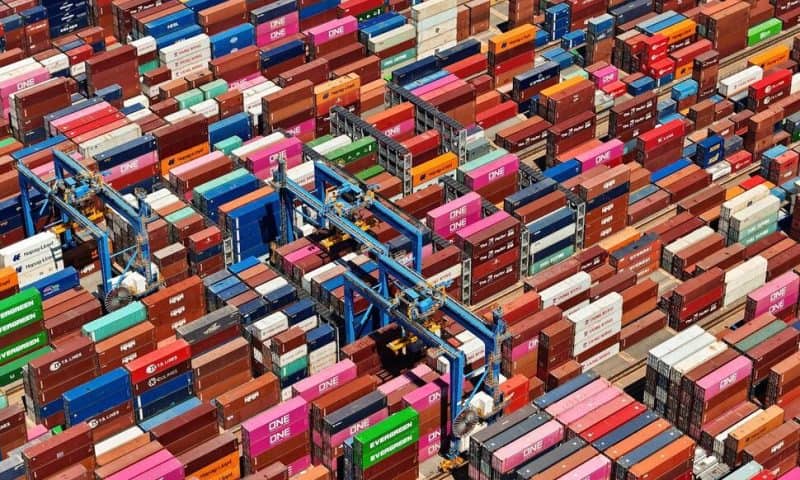Official statistics say that China’s exports for May grew at their fastest pace in more than a year despite trade tensions, though imports fell short of analyst expectations
HONG KONG — China’s exports in May grew at their fastest pace in more than a year despite trade tensions, though imports fell short of analyst expectations, according to customs data released Friday.
Exports jumped 7.6% in May from the same month last year to $302.35 billion, rising at the fastest pace since April 2023. Imports rose by 1.8% to $219.73 billion, missing estimates of about 4% growth.
The uptick in exports is also partly due to a lower base in the same period last year, when exports declined 7.5%.
In comparison, exports grew by 1.5% in April compared with the same period last year, while April imports rose by 8.4%.
The strong exports caused China’s trade surplus to widen to $82.62 billion, up from April’s $72.35 billion.
The growth in exports comes as China faces escalated trade tensions with the U.S. and Europe. The U.S. is ramping up tariffs on Chinese-made electric cars while Europe is considering levying similar tariffs.
“Foreign tariffs are unlikely to immediately threaten exports; if anything, they may boost exports at the margin as firms speed up shipments to front-run the duties.” said Zichun Huang of Capital Economics in a note.
Huang also said that exports would be supported by a weaker real effective exchange rate.
“Import volumes were little changed last month, but they will probably rise soon, with increased government spending supporting the import-intensive construction sector,” she said.
The 10 nations of the Association of Southeast Asian Nations remained the largest destination for Chinese products, with exports to ASEAN growing 9.7% from year-on-year in the January to May period to $50.83 billion.
Exports to the U.S. grew just 0.2% in the January through May period compared with the same time last year, while shipments to the European Union declined, slipping 3.9% year-on-year.
Steel, automobiles, home appliances and ships have been the fastest growing categories of Chinese exports this year. Automobiles have climbed at the fastest rate, with China exporting 2.4 million vehicles in the first five months of the year, up 26.8% compared with the same period last year.
China is facing accusations from the U.S. and the European Union of overproducing and flooding overseas markets with cheap electric vehicles. Both have worked to impose tariffs on such vehicles. Meanwhile, China is also concerned that duties imposed on its EVs would reduce exports amid weakening demand at home.
Lynn Song of ING Economics said that should tariffs on Chinese strategic exports and automobiles be aggressive, there is “potential for retaliation and escalation of trade friction.”
“We remain cautious about the trade outlook for the second half of the year and expect its contribution to growth to decline,” Song said in a note.
Factory activity in China slowed more than expected in May, according to an official survey released last week.
The manufacturing purchasing managers index from the China Federation of Logistics and Purchasing fell to 49.5 from 50.4 in April on a scale up to 100 where 50 marks the break between expansion and contraction.
China has struggled to bounce back after the COVID-19 pandemic, as it grapples with weaker demand globally after the U.S. Federal Reserve and other central banks raised interest rates to counter inflation. A slump in China’s property sector also is weighing on growth.
China has set a target of around 5% for economic growth this year, an ambition that will require more policy support, economists say.

